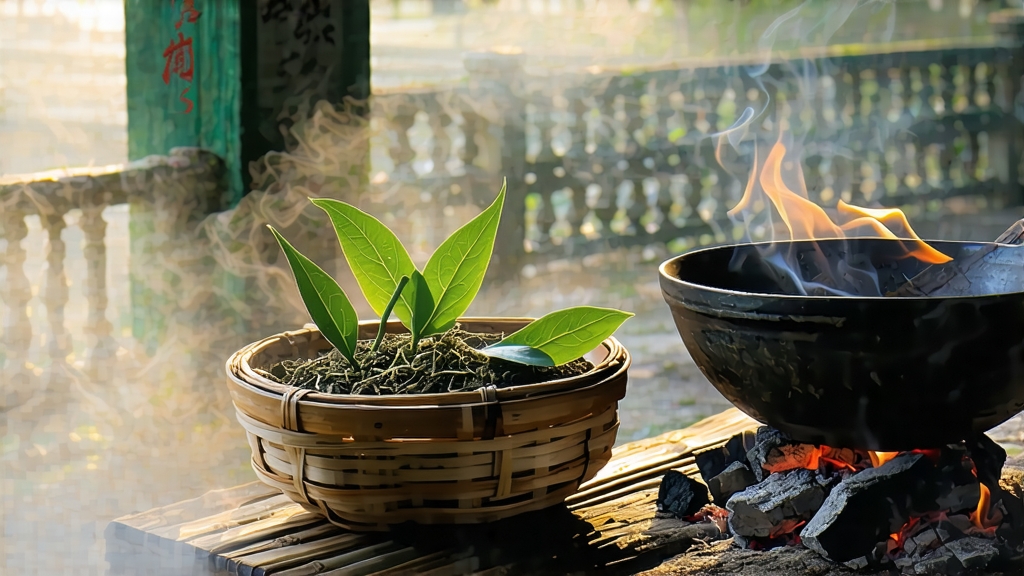
Longjing, literally “Dragon-Well,” is more than a green tea; it is a liquid manuscript of Chinese aesthetics, geography, and social etiquette. First praised in Tang-dynasty gazetteers and immortalized when the Qianlong Emperor (r. 1735–1796) planted eighteen bushes beside Hangzhou’s Lion Peak, Longjing has spent twelve centuries refining its reputation from regional tonic to national treasure. Today it leads every official list of China’s Ten Famous Teas, yet its name is still whispered like a secret among growers who believe the hills themselves breathe through the leaf.
Geography writes the first chapter. The tea’s 168-square-kilometer heartland lies where the Tianmu mountain range funnels cool mist toward Hangzhou’s West Lake, creating a micro-climate of 1,500 mm annual rainfall, 72 % average humidity, and acidic quartz-sand soil rich in selenium. Within this zone, five historic villages—Shífēng (Lion Peak), Méijiāwǔ, Wēngjiāshān, Hǔpáo (Tiger-Run), and Lóngjǐng proper—produce leaf whose amino-acid ratio hovers at 4.5 %, almost double that of teas grown merely ten kilometers away. The difference is tasted as a sweet, almost soy-like umami that Chinese call “xian.”
Longjing is not a single cultivar but a stylistic family. The heirloom Shífēng qunti zhong, a seed-propagated landrace with serrated, oval leaves, yields the most complex cup but only 3,000 kg a year. Government-led clonal selections such as Longjing #43 (released 1987) bud seven days earlier, resist frost, and offer a brighter green color, yet purists claim they lack the mineral finish of their ancestor. A third group, the Wuniuzao (“black-bull early”), sacrifices flavor for the earliest market date, often picked before Qingming festival; its thin liquor is sold cheaply to tourists who have not learned to ask for the real spring calendar.
The craft begins in the field. Pickers, 70 % women whose fingers have been trained since adolescence, break each shoot with a nail-length “dragon-claw” motion that avoids bruising the stem. The imperial standard—one bud plus one unfolded leaf, 2.5 cm long, 2.2 grams per 100 shoots—fills only 250 g after ten hours of plucking. Leaves are delivered within two hours to shaded courtyards where withering is skipped; instead, they are immediately “killed-green” in seasoned iron woks heated to 180 °C. A master chǎo-shī (firing master) presses, flips, and shakes 250 g of leaf for three minutes, reducing moisture from 76 % to 30 % while locking in the jade color. The same leaf then undergoes a second, cooler “hui guo” roasting at 70 °C for twenty minutes, during which the hand motion changes ten times: tā (pressing flat), dā (beating lightly), mò (grinding), and so on. The finished tea contains 6 % moisture, curls into a flat spear 2 cm long, and carries a faint imprint of the wok’s spiral grain—evidence of human touch that machines still cannot counterfeit.
Water chooses its own temperature. Hangzhou locals quote the proverb “85 for dragon, 75 for phoenix,” meaning Longjing prefers 85 °C while more delicate green teas like Biluochun want 75 °C. Internationally, where kettles lack Chinese thermostats, the rule is simple: boil, then wait two minutes, or pour into a fairness pitcher first. Glassware is favored over porcelain because it allows the “three-stage dance”: leaves float, sink, then rise again as their internal air pockets expand. Use 3 g per 150 ml, or a heaping teaspoon per cup. The first infusion, 45 seconds, releases a pale champagne liquor with aromas of roasted chestnut and fresh cream; the second, 30 seconds, intensifies the sweetness; the third, 50 seconds, offers a gentle asparagus note before the leaf gracefully retires. Cold brewing—4 g per 500 ml spring water, refrigerated 6 hours—extracts amino acids without tannic bite, creating a liquor that tastes like liquid marzipan.
Tasting follows four Chinese verbs: guan (look), wen (smell), pin (sip),